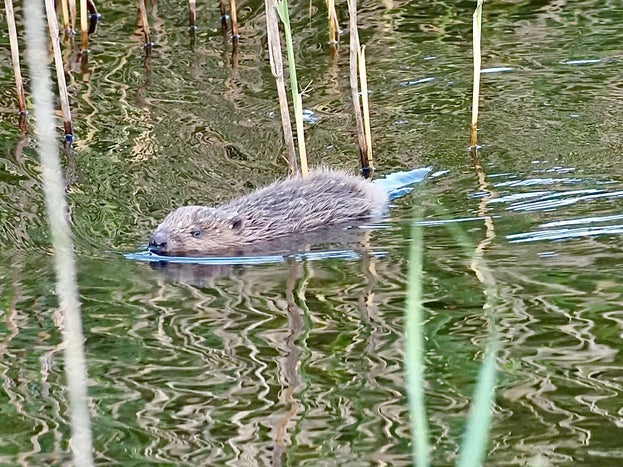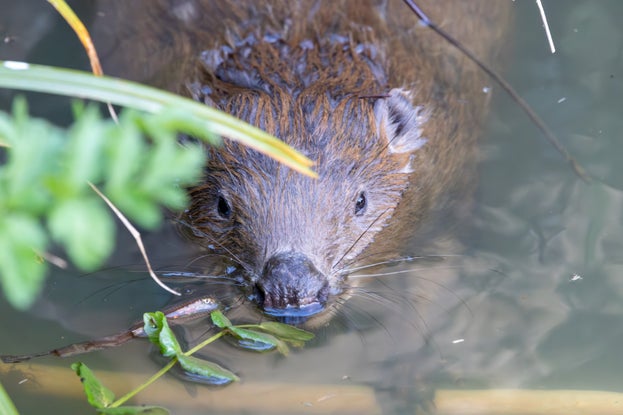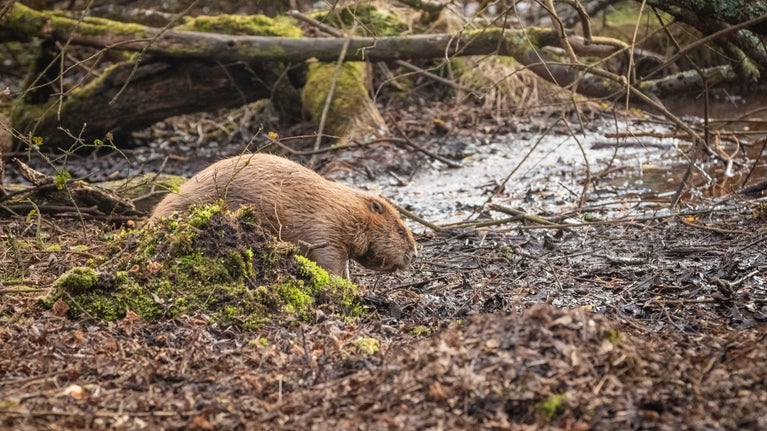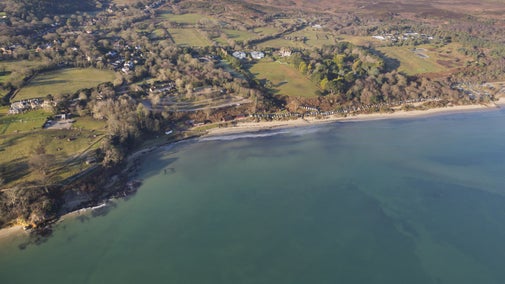August 2025
The good, the bad and the unexpected…
It’s five months since the National Trust released two pairs of beavers into Little Sea, Studland. As the first ‘wild’ release of these eco-system engineers, the project gained huge interest in the media and among conservation organisations, and captured the hearts and minds of people locally and nationally.
Extensive research had gone into the suitability of Little Sea as a habitat for beavers. But it’s impossible to exactly predict how wild animals will behave in any reintroduction project. So, we’ve been closely monitoring their activity via remote motion-sensor cameras, observations by staff and volunteers, and studying trail signs such as teeth marks, felled trees or lodge/dam building.
It is still early days, but here is an update on what has happened so far.
Busy beaver lodge
In early 2024, two beavers appeared in Little Sea, before we had gained a licence for a wild release. As beavers are a protected species, our priority was to ensure their welfare. Since then, they have been thriving. They built an extensive lodge and reared one kit in 2024. We completed a health check on the adults in early 2025 before releasing any more beavers to the area. This family has since produced two more kits. Young beavers stay with their parents for up to two years before exploring to find a new territory.
This has been really encouraging, showing that Little Sea is a very suitable habitat for beavers.
‘Tails’ of the unexpected
The two beavers that we released in March on the west side of the lake have proved rather unpredictable. There were sporadic sightings of individual beavers, then we had the most unexpected news – that a beaver had been spotted in Swanage.
This was quickly confirmed, and the decision was made to trap it and bring it back to Little Sea. We wouldn’t usually intervene when a beaver relocates itself, but in this case, we moved it for welfare reasons. It was spotted in a popular dog-walking area, and there was no deep water for the beaver to hide in, making it very vulnerable.
We worked with support from the Beaver Trust to capture the animal, and the microchip revealed it was the female from this pair. She was reunited with her mate, but then they temporarily made their home in the nearby water treatment works, where deep lagoons offered easy swimming and plenty of feeding opportunities. We worked closely with Wessex Water to fence the beavers out as it wasn't practical for them to be there. A new lodge has now appeared at the south of Little Sea which we hope belongs to this pair - as it would mean they are likely to start a family next year.
At times, these beavers have been seen crossing Ferry Road, close to the entrance to Knoll Beach. So, we’re asking drivers to be aware, especially when driving at dusk or night-time.
A sad outcome
The pair that were released on the eastern side of the lake initially settled in the marshes downstream of Little Sea. But with the long dry spring and early summer, water levels fell, and the beavers moved elsewhere. Whilst we were trying to find where they had gone to, we had the sad news that the body of a beaver had been washed up in Swanage Bay.
We recovered the body, and the microchip revealed that it was the male from this pair. Until a post-mortem is carried out, we won’t know the cause of death, but initial signs do indicate salt-water poisoning. Beavers don't usually live in salt water, but they can spend short periods of time in the sea to explore the area or for migration purposes. Longer periods of salt-water ingestion can be fatal. For this reason, if anyone ever spots a beaver in the sea, we’d ask them to let us know.
Whilst this is really upsetting, it does highlight that beavers are wild animals and there are always risks with reintroduction projects.
We are now trying to locate the female from this pair. We have seen signs of feeding in the initial release area but it may take some time to confirm whether this is her. There is no reason why she can’t live at Little Sea as a solitary individual until she finds a new mate.
Implications for the future
The loss of one of the beavers doesn’t affect the long-term aims of the project to introduce more animals and establish a healthy, viable population of beavers in Purbeck. However, it may affect exactly where and when we introduce new animals. We want to ensure that the current pairs are well-settled with established territories before adding more beavers to Little Sea. We will then consider which ages and sexes may be most beneficial to the future population.
We will continue working with other partners and beaver experts as we decide on next steps.
Eco-engineering in action
So far, our beavers have been active, selectively felling trees in the wet woodlands around Little Sea. This actually brings huge ecological benefits, slowly opening up some of the closed, dark areas, creating more space and light for plants, insects, amphibians and other wildlife to thrive. The trees don’t die, but soon sprout new shoots – in fact, regular coppicing like this is important to keep the woods healthy.
People pulling together
We have set up a steering group for the project which involves about 20 people, including farmers and neighbouring landowners, local communities and statutory bodies, as well as beaver experts from several organisations. This constructive involvement of a wide range of interests is one of the reasons we can be confident that we will make beaver reintroductions work for everybody in Purbeck.
Our growing group of volunteers have been invaluable, learning to identify which beaver is which, tracking their movements and managing our network of cameras every night to see what the beavers are up to. They have also tirelessly waded through countless hours of footage (and actual swamps!) to help us to keep up to date with the beavers’ latest activities. We couldn’t do this without them.
Where to watch the beavers
Sightings of the beavers are currently possible from all three bird hides at Little Sea (Triangular, Rees Cox and Grebe), the best place probably being the Triangular Hide off Ferry Road. Remember that beavers are largely nocturnal, but you might spot them at dusk or dawn. You’ll need to be quiet – and patient!
We will continue to keep local residents informed and involved with the reintroduction of beavers to Little Sea. It may not always be easy, especially when there is sad news, but we will issue regular project updates.










